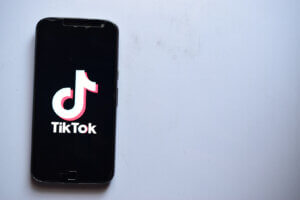How will you connect with your employees in 2022?
February 8, 2022

It seems like just yesterday when we were all gladly waving goodbye to 2020, and yet in a blink, here we are. In the next several columns, I’d like to focus on helping you get prepped for coming out of the gate strong in 2022 by having a plan in place.
This week let’s focus on one of the most important and overlooked audiences – your employees. All too often how, when and what we communicate to our own team is an afterthought, despite the fact that they are often the conduit through which we communicate and connect with our customers. That feels very shortsighted.
All of that is true under any circumstances. But today, as every organization on the planet is struggling to find and keep good staff, it becomes mission-critical. If we don’t become an employer of choice, we’re going to struggle to even maintain market share, let alone increase it.
There are several key communications (I might even call them marketing) components to being an employer of choice. If you can’t give yourself top marks for each of these, they are worthy of some planning time as you look forward to 2022.
Values/mission: People want to work for companies whose worldview aligns with their own. Having some values on a wall or in your employee handbook isn’t enough. You should plan on communicating regularly about what those values and mission mean to the organization and spotlight all the ways you are actually walking your talk.
Beyond that, recognizing employees who exemplify those values and, equally important, not tolerating employees who behave in violation of them, is one of the most powerful ways to communicate that they’re more than lip service.
Where are we headed: Your employees want to know where you plan to take the company in the coming months. More than that, they want to play a role in helping you get there. They very well could have ideas or insights you need to actually get to the goals more quickly.
Setting goals that they can be privy to and sharing a progress update every month or quarter will help create a sense of teamwork and accomplishment when you hit the goals. It also reminds them that they work for an organization that is hitting its marks, which means more opportunity for the employees. In this ultra-tight labor market, that’s a good message to reinforce!
What’s on sale this week? On more than one occasion, we’ve worked with a client who didn’t have a mechanism for sharing the upcoming ads or promotions with their internal team before they went live. Imagine how frustrating it would be to have your customers know more than you do about a current offer.
If this is your situation, solve it. Find a way to always share any marketing messaging or sales promotion with your team before it hits the streets.
Don’t just say it once: Whatever your most important messages are for your team, don’t fall into the trap of assuming they heard and retained it once you’ve shared it once. If it’s truly important, it’s something worth repeating. It’s also worth repeating in different ways. Everyone has a natural way of taking in information. If it’s really mission-critical, use a variety of communications tools – visuals, video, audio, etc.
If you want your team to accelerate their retention and understanding of a key company initiative or focus, get them involved in an activity around it. The more hands-on we are with ideas, the more we remember them.
As we begin 2022, one of the first commitments I’d like to suggest you make is to overcommunicate with your employees. Believe me, it will not be too much!
This was originally published in the Des Moines Business Record, as one of Drew’s weekly columns.
More








